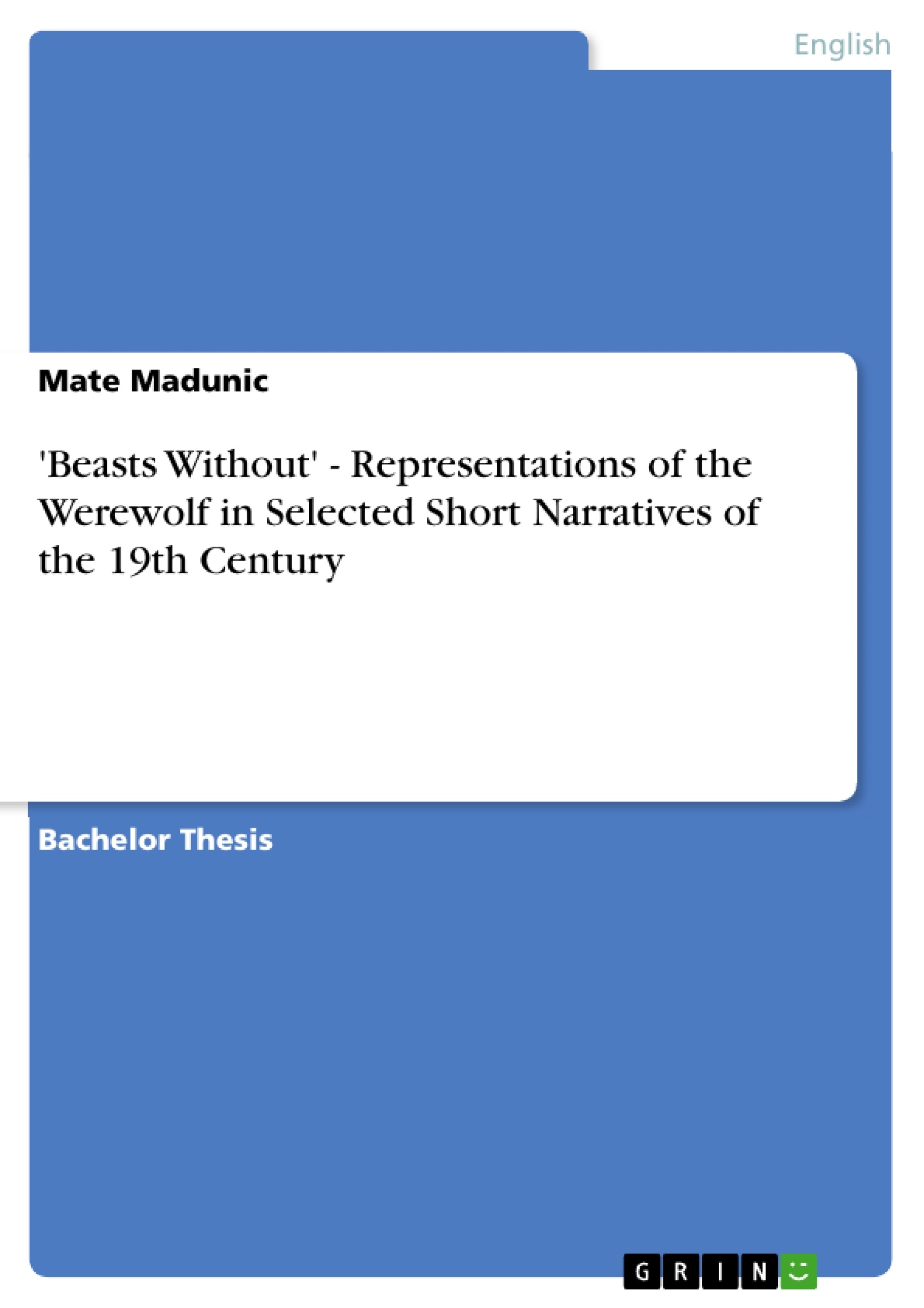The thesis examines the different types of fictional werewolves that evolved in the English literature of the (late) 19th century and also argues in favor of an interpretation which reads those werewolves as representative of the Victorian middle class' fears and processes of identity formation.
Inhaltsverzeichnis (Table of Contents)
- Introduction
- Werewolves in Western Culture
- What Monsters Tell Us About Identity-Formation
- The Werewolf in Selected Short Narratives of the Nineteenth Century
- 'Beasts Without': the Werewolf as Cultural 'Other'
- 'Beasts Below': the Werewolf as Working-Class Member
- 'Beasts Above': the Werewolf as Debauched Aristocrat
- 'Beasts in White': the Female Werewolf
- 'Beasts Within', or: "Much deeper in the nature of man"
Zielsetzung und Themenschwerpunkte (Objectives and Key Themes)
This paper examines the portrayal of the werewolf in nineteenth-century short narratives, exploring its significance in understanding societal anxieties and identity formation. It aims to demonstrate that the werewolf motif, often overlooked in critical discourse, provides a valuable lens for understanding cultural anxieties and societal dynamics of the time.
- The werewolf as a symbol of cultural 'otherness'
- The werewolf as a reflection of class tensions
- The werewolf as a manifestation of societal anxieties about gender roles and sexuality
- The werewolf as an embodiment of the darker aspects of human nature
- The werewolf as a symbol of the breakdown of social norms
Zusammenfassung der Kapitel (Chapter Summaries)
The first chapter provides a brief overview of the history of the werewolf in Western culture, tracing its evolution from ancient times to the nineteenth century. It highlights the emergence of the werewolf as a figure of cultural anxiety and its association with the devil and the supernatural.
Chapter two explores how monsters like the werewolf reflect and illuminate the complexities of identity construction in the nineteenth century. Drawing upon theories of transgression, it examines the ways in which the werewolf, as a figure of "otherness," challenges societal norms and anxieties.
Chapter three analyzes a collection of nineteenth-century werewolf stories, examining the diverse portrayals of the werewolf across various social classes and genders. It explores the functions of these depictions in reflecting the anxieties and perspectives of the ruling middle class.
Schlüsselwörter (Keywords)
The key concepts explored in this paper include the werewolf motif, nineteenth-century literature, cultural 'otherness', class tensions, gender roles, societal anxieties, identity formation, transgression, and the breakdown of social norms. The paper examines the werewolf as a symbol of these concepts and their impact on the social fabric of the nineteenth century.
- Quote paper
- Mate Madunic (Author), 2010, 'Beasts Without' - Representations of the Werewolf in Selected Short Narratives of the 19th Century, Munich, GRIN Verlag, https://www.grin.com/document/151898



